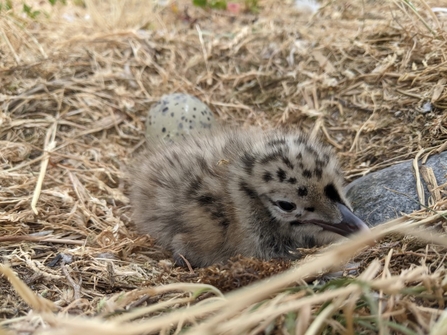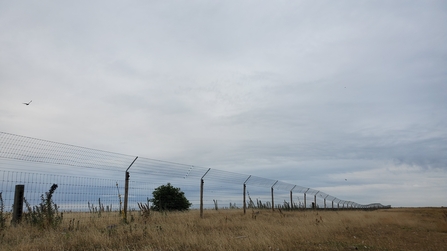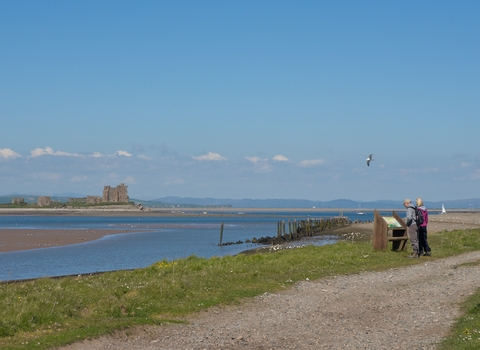
Positive news about gull numbers at South Walney Nature Reserve, after predator-proof fence is installed © Cumbria Wildlife Trust

Positive news about gull numbers at South Walney Nature Reserve, after predator-proof fence is installed © Cumbria Wildlife Trust
The number of gulls nesting and fledging at South Walney Nature Reserve has exceeded our expectations, thanks to the installation of a predator-proof fence.
South Walney Nature Reserve was once home to the largest gull colony in Europe, with tens of thousands of herring and lesser black-backed gulls, but this has fallen over recent years due to increased predation by foxes and badgers.
By 2020, numbers were down to a few hundred pairs and the colony was in danger of vanishing completely. Last winter, thanks to funders including British Birds Charitable Trust, Tesco Community Grants, FCC Communities and Natural England, and with support from LIFE on the Edge and Windcluster, a permanent predator-proof fence was installed to protect 7.5 hectares of gull colony. Last year, chicks fledged for the first time in over a decade, but not many. Over winter 2021/22 the fence was heightened and strengthened.
This year, not only did more chicks fledge but the number of gulls nesting at South Walney Nature Reserve increased beyond expectation, from 449 pairs (the lowest since the 1950s) to 1,128 pairs, a stunning 150% increase.
Paul Waterhouse, Reserves Officer at Cumbria Wildlife Trust said: “This is great news for the gull colony at South Walney Nature Reserve. It’s the largest percentage increase recorded at the colony since the population explosion in the 1950s, when numbers of herring and lesser black-backed gulls increased from 520 pairs in 1950 to 12,000 in 1957. The gulls have been attracted back to the site by the successful fledging of chicks last year. Let’s hope this important colony continues to go from strength to strength.”
Sarah Dalrymple, Coastal Species & Habitats Officer at the RSPB said: “Although it often doesn’t feel like it when so many of them nest in our towns and cities, herring and lesser black-backed gulls are in fact in severe decline. South Walney is one of the most important natural nesting sites for these birds in England, so seeing the numbers recovering so quickly after putting up the fence is brilliant news.”
Sarah continued: “GPS tag studies show that gulls at South Walney don’t go into Barrow to feed, but get food for themselves and their chicks out on Morecambe Bay. This is the natural habitat for these birds and when they nest here, they utilise their natural food sources. It’s important gulls have safe breeding sites to attract them away from our towns and cities.”
The UK conservation status of herring gulls is red and black-backed gulls is amber, the two most critical categories. Read explanation of these conservation categories.
With stunning views across Morecambe Bay, South Walney Nature Reserve is full of interest and a fantastic place for bird watching. It is also home to the only grey seal colony in Cumbria. Please note there is strictly no access to the beach where the seals are located. The nature reserve is open daily 10am to 5pm (4pm in winter), only assistance dogs are allowed.

Predator-proof fence at South Walney © Cumbria Wildlife Trust

Visitors using a wildlife interpretation board at South walney nature reserve, Piel castle in the background © John Morrison
Walney Island, Barrow in Furness